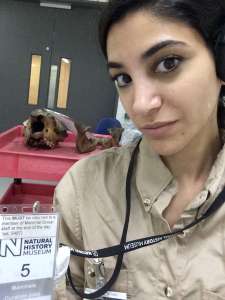Next to bringing back the dead, stopping the near gone from slipping off the precipice is a near impossible task. That is precisely why I have signed up to be in the conservation field. I’m intent on stopping these near “splats” of species that help stabilize the ecosystems in which they furnish. I like the near impossible.
With 1/4th of all mammals at risk of extinction it has come to the attention of (nearly) our entire planet that we are either to accept that our world is changing for better or for worse with our species in it or that we can help thwart the effects. This high rate of extinction has been propelled by human action either by directly killing off species by our hand or indirectly by poisoning ecosystems such as with chemical runoff or by acidifying coral reefs with our actions of re-release of carbon.
At this point, government policy seems to be our only saving grace against greenhouse-gas emissions. And thank you, Mr. Obama, for getting power plant emissions to drop 16% from 2005 to 2012. It’s certainly a start!
But we aren’t all part of international politics capable of policy changes that could save our world with reinforcement by law. There are us scientists on the ground that need to produce the data and that need to stand as the medics for the plants and animals suffering. That’s where I and thousands of others step in.
Five species of rhino remain on this Earth: black rhino (Diceros bicornis), white rhino (Ceratotherium simum), Indian rhino (Rhinoceros unicornis), Sumatran rhino (Dicerorhinus sumatrensis), and Javan rhino (Rhinoceros sondaicus). While the prospect of all five making it into the 22nd century appears grim due primarily to poaching and secondarily to habitat encroachment, we are certainly trying to prove the predictions wrong.
As those of you who follow this blog know: I’m a wildlife conservationist studying veterinary medicine at Cornell University College of Veterinary Medicine. My specialties within the field of veterinary medicine are wildlife medicine and orthopaedics. A unique occasion arose whereby a veterinarian was needed to determine how to age the most endangered species of rhinoceros: the Javan rhino. The number of extant Javan rhino remains in debate. One paper quotes as low as 32 while other data claims it to be between 55-60. Regardless, with most certainly fewer than 60 individuals left, the need for this research is great, as we need to know how old our living rhinos in order to assist in reproduction programmes for the species. So who could combine orthopaedic data with that of wildlife management? Yours Truly!
Honoured by the opportunity posed by my professor, I applied for grants both within my university and externally and have been traveling the world in order to study this rare rhino. (Yes, I do, indeed, feel very guilty by the carbon footprint of these airplanes, but I really couldn’t swim. It just wouldn’t be efficient- the rhinos would dwindle further by the time I reached the Indonesian shore).
The work involves intercontinental collaborations to study the calvaria and appendicular skeleton of deceased Javan rhinos. Back in the 1800’s and early 1900’s Europeans (led predominantly by the English) made poaching quite a sport- and greatly contributed to today’s extinction crisis, mind you. The specimens that they took back with them have thus been used for my study. My research has involved institutions such as Harvard University, Oxford University, Natural History Museums of London and Liverpool, UK, the Muséum National d’Histoire Naturelle Paris, France, and the Veterinary College of IPB, Bogor, Indonesia. The study concludes in various Indonesian zoological collections and at Ujung Kulon National Park itself.
So for the past three weeks I have been traveling to the aforementioned institutions to study these specimens. Although I cannot disclose any findings or specific methodology publicly at this time, I can assure you that there is a light at the end of the tunnel!
I return to IPB’s Veterinary College tomorrow to study yet another specimen. There will be a week interim to this research, as I travel to Sumatra to work with Sumatran rhinos and Sumatran elephants. Perhaps I shall be lucky enough to spot a Sumatran tiger in the wild? I’ll snap a photo if I am so lucky for you all to enjoy!
More exotic adventure to follow…
Stay Wild,
Gabby Wild



Good luck with your study. Hope your findings can have a positive effect on the conservation effort.
Thank you very much!
Very interesting work. Stay safe in the Sumatran habitat!
Have a great trip. I know it will be memorable & successful!